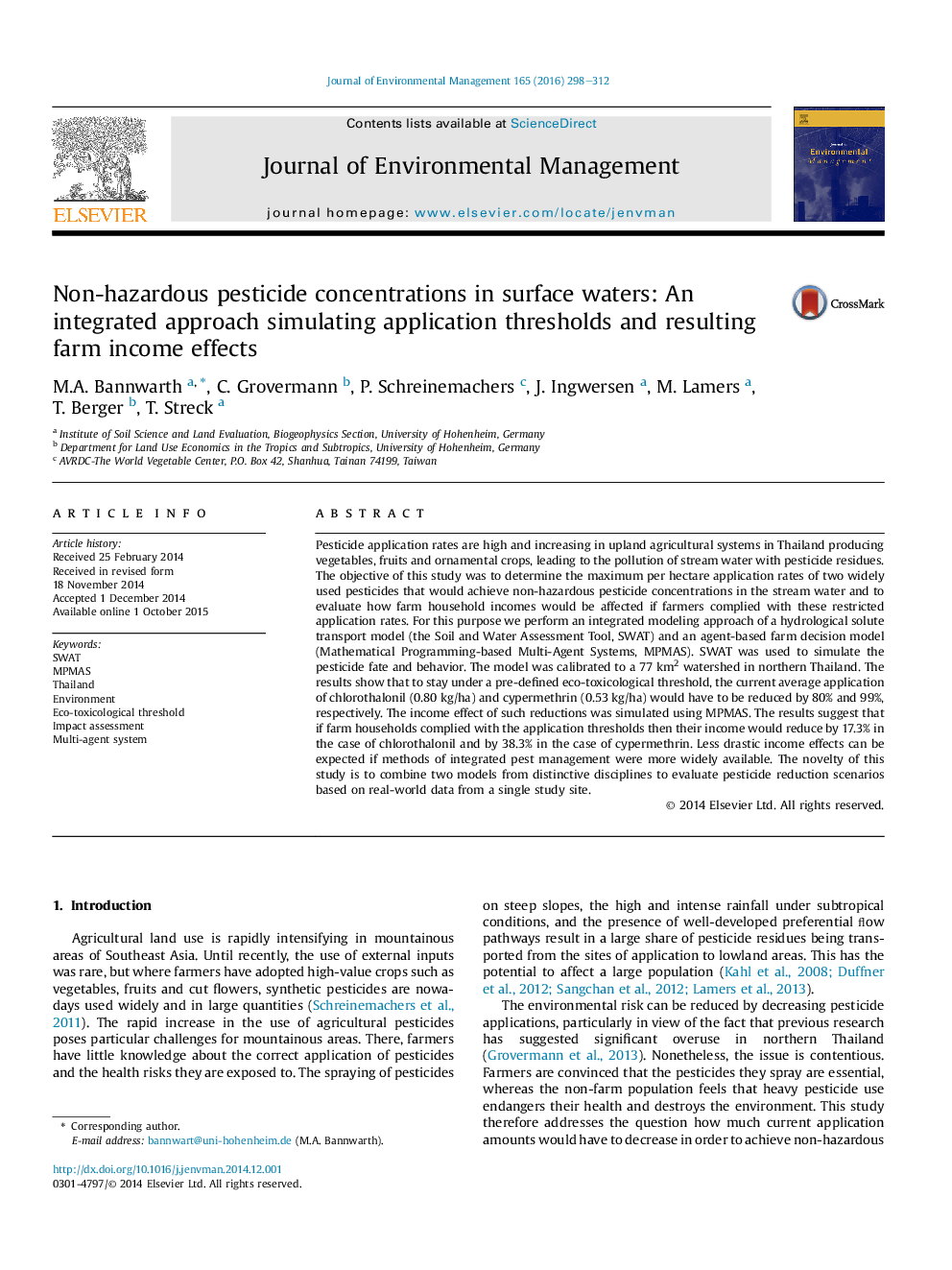| Article ID | Journal | Published Year | Pages | File Type |
|---|---|---|---|---|
| 1055501 | Journal of Environmental Management | 2016 | 15 Pages |
Abstract
Pesticide application rates are high and increasing in upland agricultural systems in Thailand producing vegetables, fruits and ornamental crops, leading to the pollution of stream water with pesticide residues. The objective of this study was to determine the maximum per hectare application rates of two widely used pesticides that would achieve non-hazardous pesticide concentrations in the stream water and to evaluate how farm household incomes would be affected if farmers complied with these restricted application rates. For this purpose we perform an integrated modeling approach of a hydrological solute transport model (the Soil and Water Assessment Tool, SWAT) and an agent-based farm decision model (Mathematical Programming-based Multi-Agent Systems, MPMAS). SWAT was used to simulate the pesticide fate and behavior. The model was calibrated to a 77Â km2 watershed in northern Thailand. The results show that to stay under a pre-defined eco-toxicological threshold, the current average application of chlorothalonil (0.80Â kg/ha) and cypermethrin (0.53Â kg/ha) would have to be reduced by 80% and 99%, respectively. The income effect of such reductions was simulated using MPMAS. The results suggest that if farm households complied with the application thresholds then their income would reduce by 17.3% in the case of chlorothalonil and by 38.3% in the case of cypermethrin. Less drastic income effects can be expected if methods of integrated pest management were more widely available. The novelty of this study is to combine two models from distinctive disciplines to evaluate pesticide reduction scenarios based on real-world data from a single study site.
Related Topics
Physical Sciences and Engineering
Energy
Renewable Energy, Sustainability and the Environment
Authors
M.A. Bannwarth, C. Grovermann, P. Schreinemachers, J. Ingwersen, M. Lamers, T. Berger, T. Streck,
